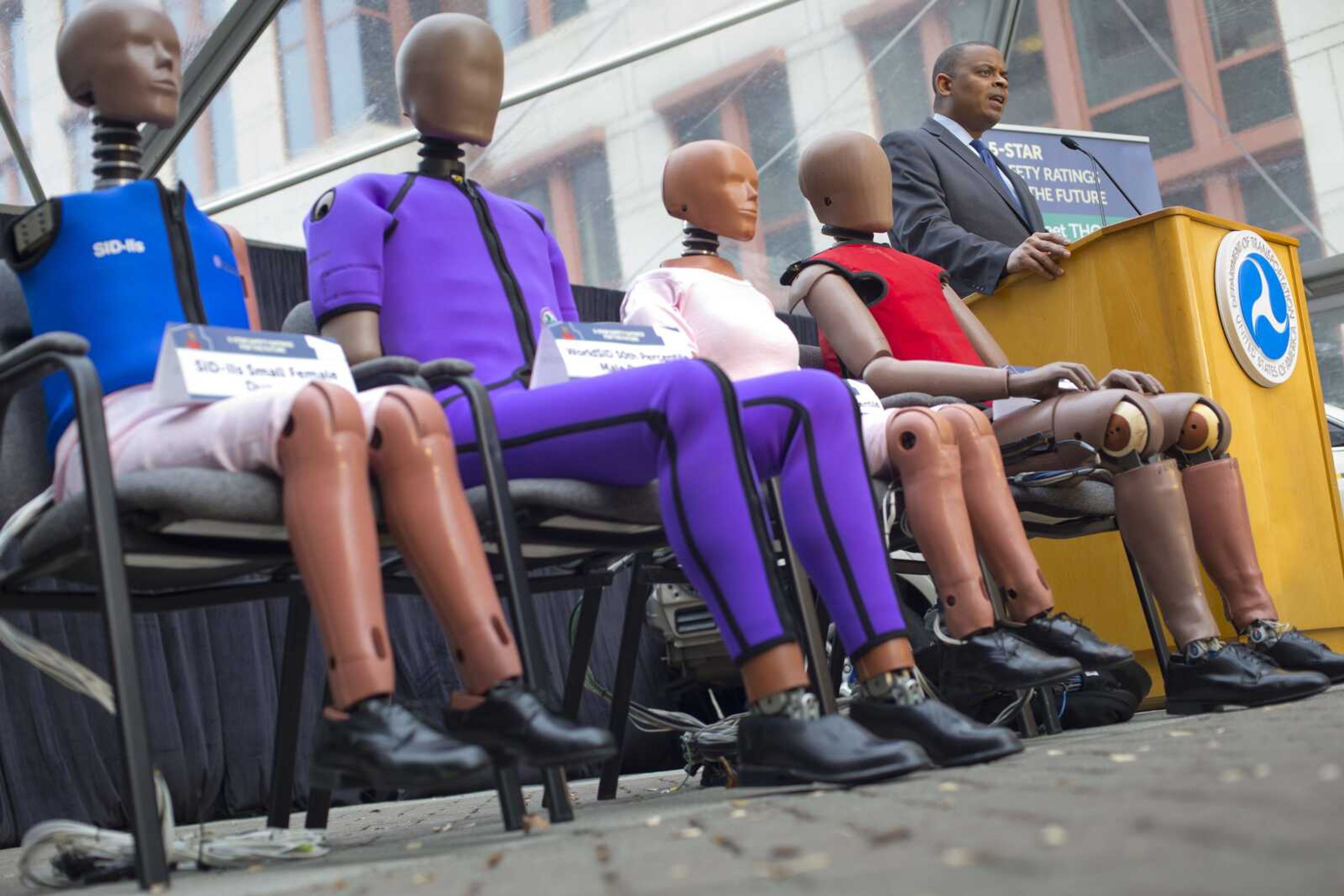Auto safety ratings to include collision prevention systems
WASHINGTON -- The government on Tuesday announced plans to update its safety rating system for new cars and trucks to include whether the vehicle has technology to avoid crashes, in addition to how well it protects occupants in accidents. The five-star rating system now uses crash tests to assess how well people inside are shielded from injury or death in front, side and rollover crashes...
WASHINGTON -- The government on Tuesday announced plans to update its safety rating system for new cars and trucks to include whether the vehicle has technology to avoid crashes, in addition to how well it protects occupants in accidents.
The five-star rating system now uses crash tests to assess how well people inside are shielded from injury or death in front, side and rollover crashes.
While that will remain a big factor in the ratings, they also will take into account whether the vehicle has nine technologies that can help prevent or lessen the severity of crashes. Those technologies include sensors that can detect an imminent frontal collision and apply the brakes, or warn drivers about vehicles in their blind spots or that they're drifting into another lane.
Some technologies automatically switch headlight high beams to low beams when another vehicle is approaching, help prevent rollovers, and employ amber rear turn signal lights drivers are quicker to identify as indicating a turn rather than braking.
In addition, the ratings will include a new type crash test designed to simulate cars that collide at an angle. Crash tests also will use improved crash-test dummies that better represent how accidents affect the human body. And the rating system will reward cars designed to protect pedestrians who are struck by them.
"We're going to raise the bar when it comes to protecting vehicle occupants," said Transportation Secretary Anthony Foxx.
The department's goal, Foxx said, is to ultimately prevent crashes altogether. He said he's hopeful that will happen in his lifetime.
The rating system posts a rating of one to five stars on the window stickers of new cars to help shoppers identify the safest vehicles. The new system also will include half stars as well as full stars to get at nuances in safety features, said Mark Rosekind, head of the National Highway Traffic Safety Administration, which administers the ratings system. For example, a vehicle might get a half star for technology that automatically warns drivers of an impending frontal collision, but a whole star if the system automatically applies the brakes, he said.
The changes proposed for the system are subject to a 60-day public comment period, and final rules are to be issued next year. Consumers would begin seeing the new ratings on cars in model year 2019.
The new crash dummies will have more than 100 sensors, including four in the rib cage, while current dummies have only 50 or 60 sensors and just one in the rib cage, NHTSA officials said. The dummies also reflect more recent knowledge of how injuries occur, they said.
An estimated 17 million new cars and trucks are expected to be sold this year. Traffic fatalities dropped in 2014 to less than 33,000, but data from the first half of this year indicates they are increasing steeply again as the economy continues to improve and the price of gasoline drops.
Both automakers and safety advocates applauded the proposed changes.
"Crash-avoidance technologies can be life-saving innovations that we're eager to see consumers embrace," the Alliance of Automobile Manufacturers said in a statement. "Looking ahead, a significant portion of future highway safety gains will likely come from these advanced technologies."
William Wallace, a policy analyst for Consumers Union, the advocacy arm of Consumer Reports magazine, said the updates "will create a powerful incentive for automakers to make the latest life-saving technologies available on more vehicles more quickly, and that's great news for consumers."
One of the government's aims in updating the rating system is to put pressure on automakers to include crash prevention technologies in all vehicles, not just more expensive luxury models, Foxx said. In the past, automakers have voluntarily included more safety technology in vehicles in an effort to earn more stars, but many of the nine technologies proposed for the rating system are primarily available in a limited number of higher end vehicles.
Over 90 percent of new vehicles today earn a four or five star rating, but those vehicles would likely earn only about three and a half stars under the updated system, Rosekind said.
The National Transportation Safety Board, which investigates accidents, has recommended that NHTSA simply require automatics to include more advanced safety technologies in new cars. Automakers oppose requiring the new technologies, saying it should be up to consumers whether they want to pay for additional safety features or not.
"Whether these technologies are mandated in the future or not, we think this is market changing stuff that is going to impact safety to the good," Foxx said.
Connect with the Southeast Missourian Newsroom:
For corrections to this story or other insights for the editor, click here. To submit a letter to the editor, click here. To learn about the Southeast Missourian’s AI Policy, click here.








